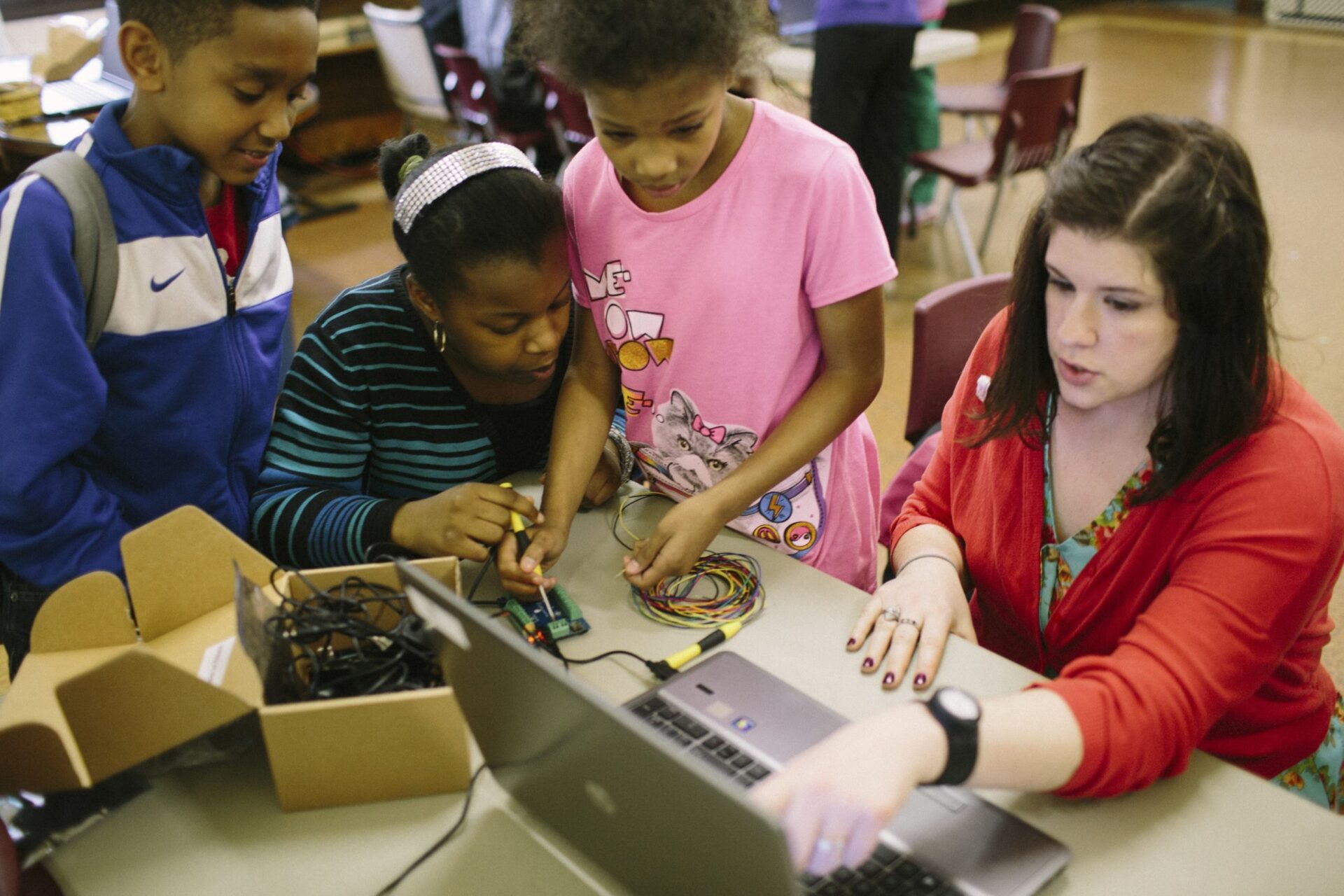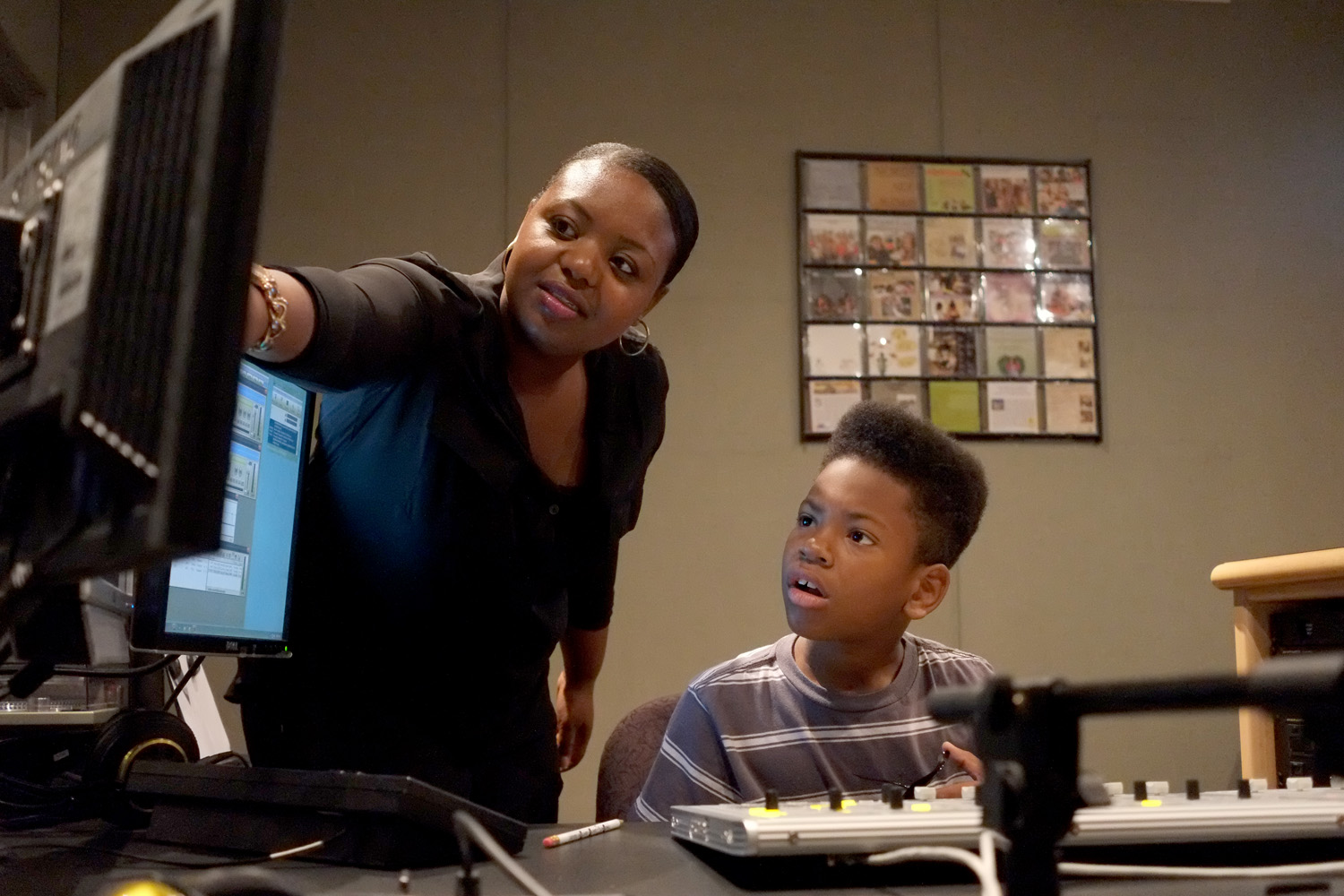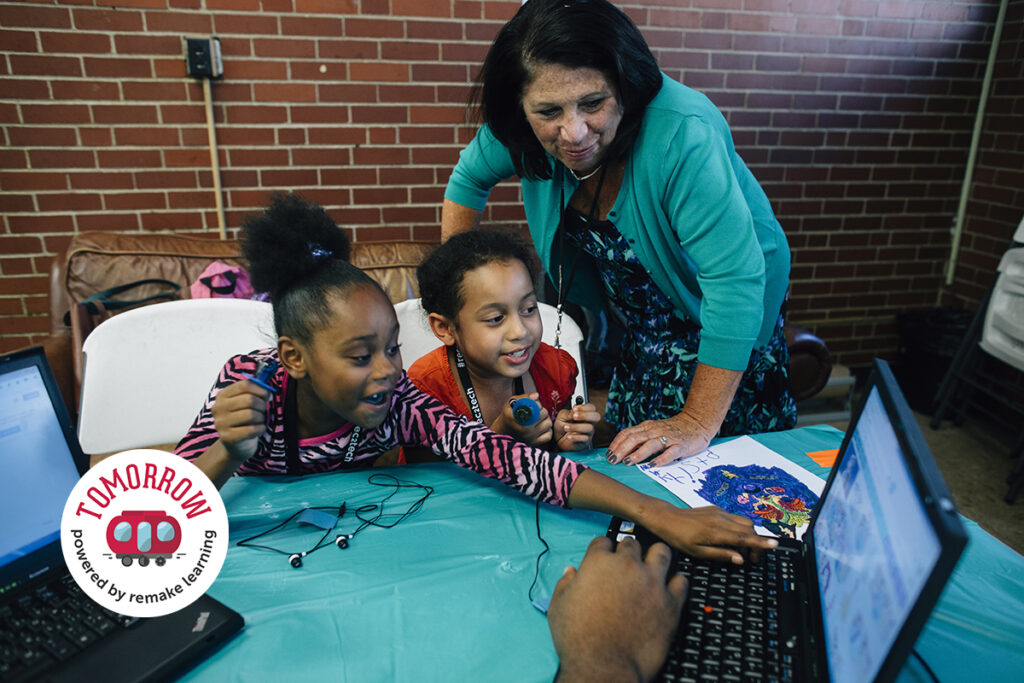When Roberta Schomburg watches kindergarteners skillfully using iPads in a classroom, she sees the value in digital learning. It’s impressive, she says, that 5-year-olds are already working confidently with sophisticated technology. Tomorrow’s adults will need to be digitally fluent. Technology and automation will likely shape their personal and professional lives.
But Schomburg, the executive director of the Fred Rogers Center, has been involved in research and discussion about the role of technology in kids’ lives since the earliest debates over screen time began. So even as she praises those creative kindergartners, she cautions: Digital devices have pitfalls, too.
Technology can bring education to every corner of the world — a discovery made decades ago by Mister Rogers, who pioneered the use of television to reach children. And yet, unequal access to technology can worsen the already corrosive divides that limit opportunities for kids in lower-income school districts. Digital devices have the power to connect us — and the power to separate us.
“Often when parents say ‘no technology,’ they’re thinking about screens. We’re tired of screens. We’re tired of children staring at screens,” says Schomburg. “But technologies have a much wider definition. They’re a tool.”
This past spring, teachers suddenly had to rely on digital tools to accomplish a nearly impossible task: effectively teach students while everyone was quarantined in their homes. Facing a flood of digital options, teachers adapted as best they could.
Now that this challenging school year has ended, teachers and parents are just beginning to figure out the best ways to use digital technology for effective learning, real communication and meaningful assessment. Along the way, we’re committed to maintaining strong relationships and real human connections in the increasingly tech-filled and automated world.
Communication And Connection
The creative team behind CodeJoy — Kelsey Derringer and Matt Chilbert — host live classes via Zoom and Facebook Live where kids learn about coding and robotics. But unlike so many Zoom classes where kids are passive recipients of information, learning at CodeJoy is all about two-way communication.
“Students can code at home, and their code can control the robots that we have here in the studio,” Derringer says. If a student sends in some code and isn’t sure how it’s going to work, the group will watch how the robot moves and together they’ll explore what is and isn’t working.
“We’re trying multiple solutions,” Derringer says, “and it’s all inquiry-based.”
One key to really connecting, she says, is keeping classes small so everyone gets a turn, gets heard and can ask questions.

When they’re not busy at CodeJoy, Chilbert and Derringer also work at BirdBrain Technologies, home of the Finch robot and Hummingbird robotics kits. Again, they use this technology to help kids communicate and connect; teams of students work together to program and control their creations.
Schomburg says communication is one of the biggest keys to effective use of digital technology, whether students are collaborating on a project or messaging one another from home.
Meet Them Where They Are
When Bennett College switched to remote instruction earlier this spring, the school didn’t have an established platform for online learning. Teachers had to get creative: Some began using Zoom or freeconferencecall.com, while others opted for Moodle.
“At the other, other extreme was a faculty member who said, ‘I’m going to use email and Word when we go remote,” says Suzanne Walsh, Bennett’s president.
This low-tech approach proved a brilliant move. The teacher knew some of her students wouldn’t be able to connect with videoconferencing platforms, but they all had access to email. So while the class lacked face-to-face instruction and email isn’t a long-term solution, every student in that class was fully included in the teaching and learning that did take place.
“If we focus on the technology, everybody’s going to say that was a failure. But what more important to us? Using the fanciest of technologies or having a way that students can demonstrate mastery of a topic?” Walsh says.
More important, she says, is dealing with the reality of the landscape than what you wish it would be.
“How do you meet students and families where they are right now? They’re at home and they’re on social media,” she says. “How do we use what’s in existence around us and make that our learning environment?”
Walsh has seen college professors embrace social media as another method of meeting students where they are. Students assigned to read a novel can discuss chapters on Twitter or share responses to a chapter via Instagram photos.
An even more creative approach: What if schools allowed students to demonstrate their goal-setting and collaboration skills through multiplayer gaming?
“I know that people have lots of feelings about video games,” Walsh says, but “if we really looked at how students are playing — if we made them live-stream their game on Twitch — we could learn a lot about student’s ability to collaborate. … We could learn a lot about their interpersonal skills.”
Not Just Consuming But Creating

The folks at Saturday Light Brigade have been teaching kids to use technology since they launched their public radio show in 1978. But while hundreds of students throughout the Pittsburgh region have gained solid skills in handling digital recorders and microphones and editing the audio files they create, the focus has always been on storytelling.
“We kind of look at technology as an engagement mechanism,” says Larry Berger, the program’s executive director. “We try to make sure people understand the fundamentals and especially some of the relevant STEM principles and how those come into play. But at the end of the day, it’s a tool for engagement.”
When students are sent out into the community to interview local people about their lives, they get excited about using tech to capture people’s voices and turn their words into mini-documentaries. Having devices makes kids a bit more comfortable asking questions because they’re asking on behalf of their listeners.
“Suddenly it becomes a really engaging, fun, structured activity,” Berger says. “It’s how you apply the technology and use it, more than looking at the tech as something in and of itself.”
Mister Rogers would surely agree.
Schomburg remembers Fred Rogers explaining that technology could be truly valuable — if it was used “in ways that really support the child and support learning and support relationships,” she says. Though today we’re using devices far more complex than the TV sets of a Generation X childhood, she believes mindset is still the key.
“That’s the guidance that we take from Fred — just looking at the wonder of it all,” she says. “If we can figure out how to use it well, it can be a wonderful opportunity. And if we use it badly, then we’re failing our children and ourselves.”
